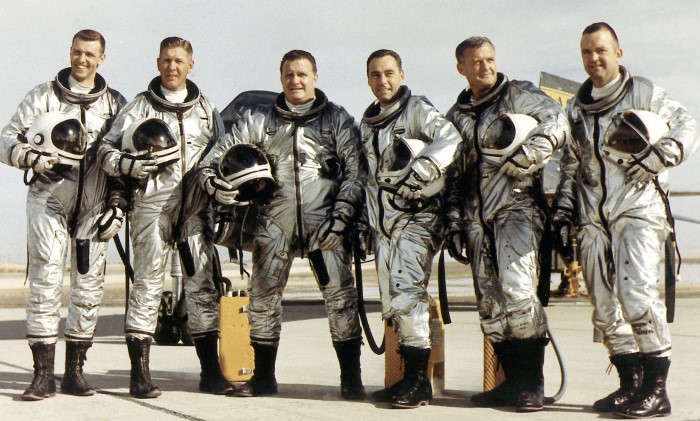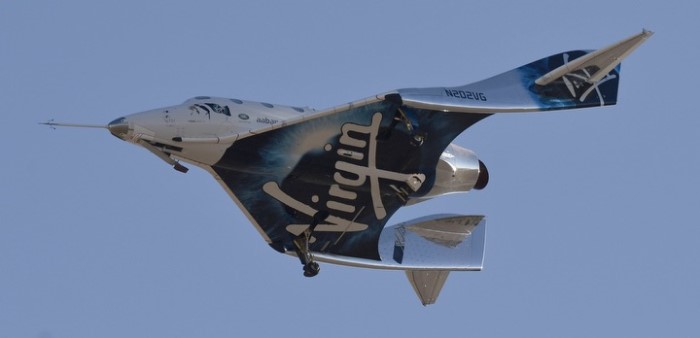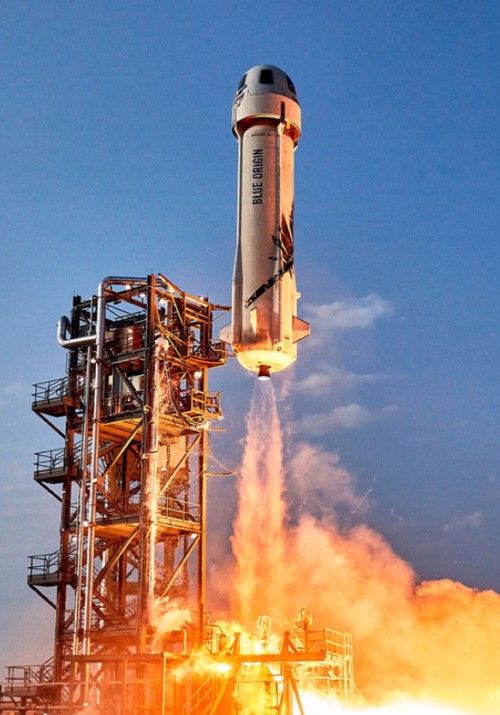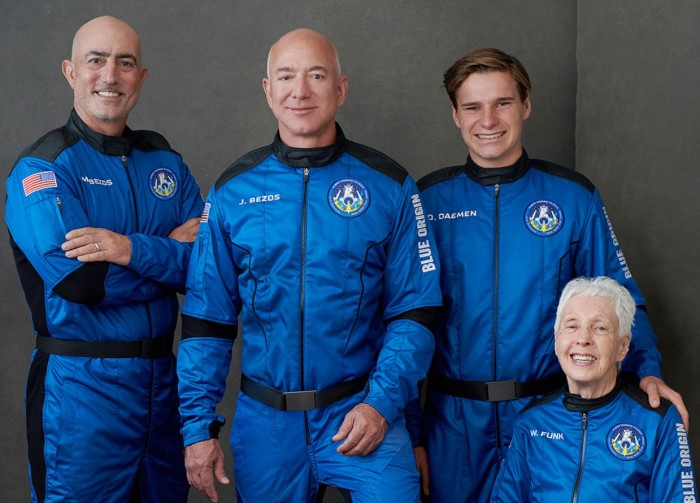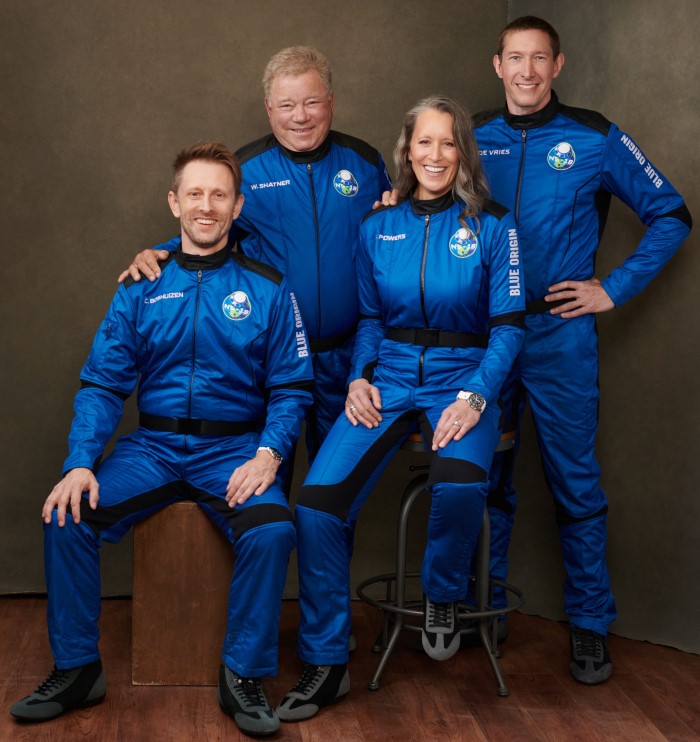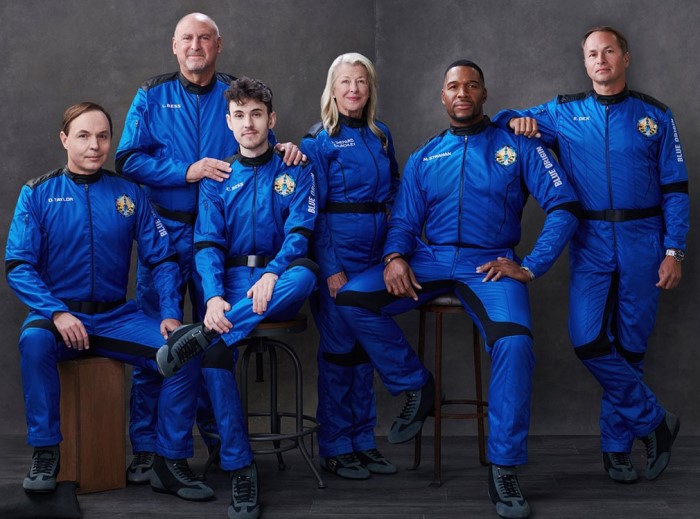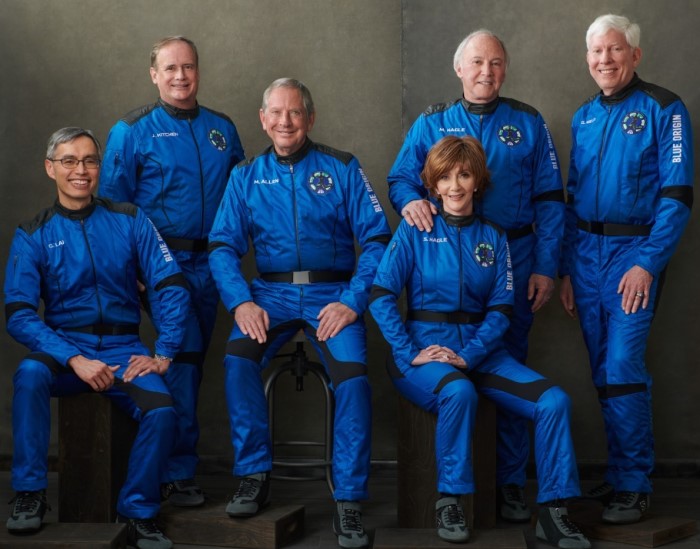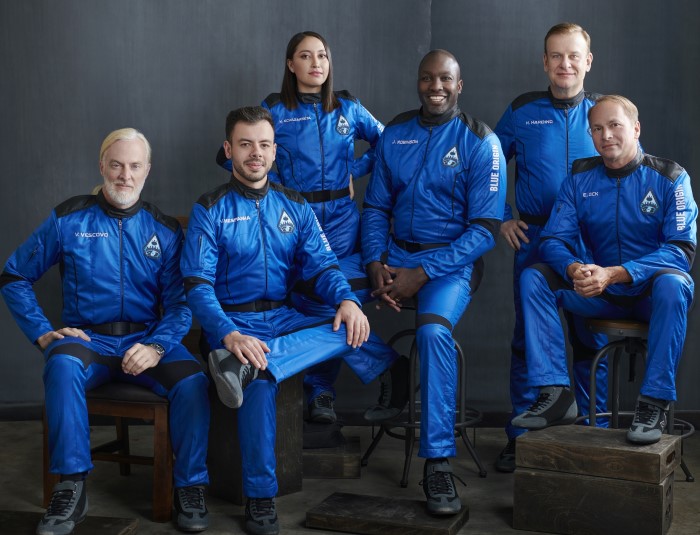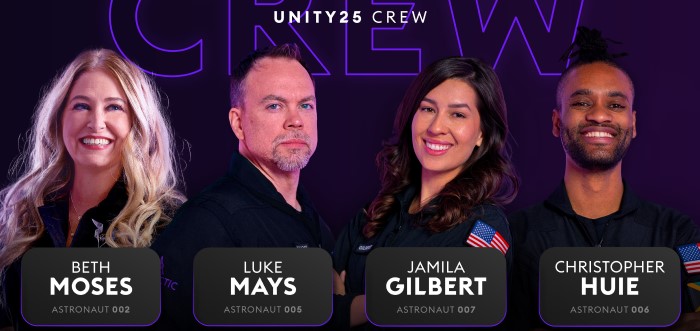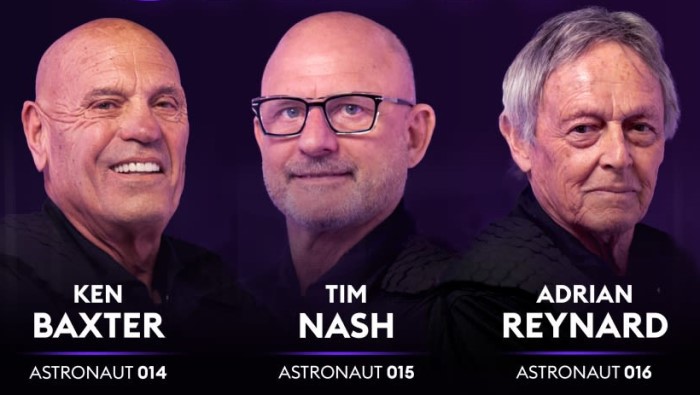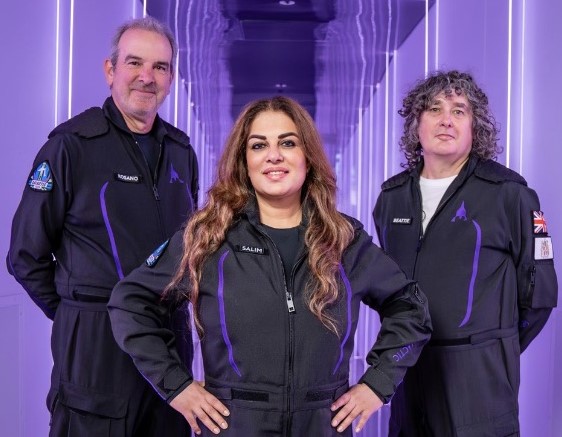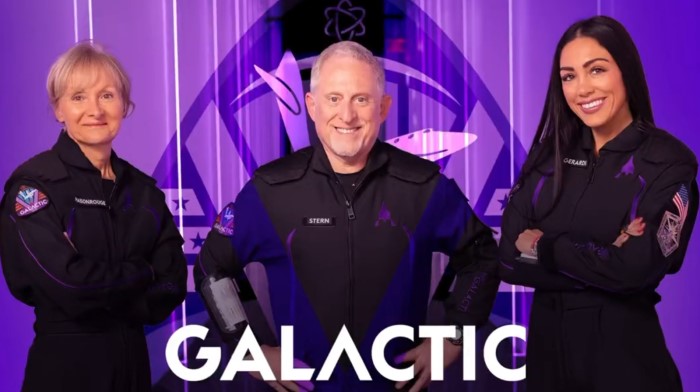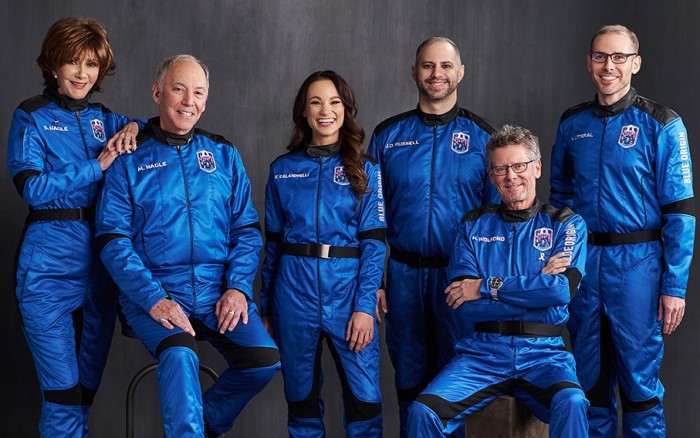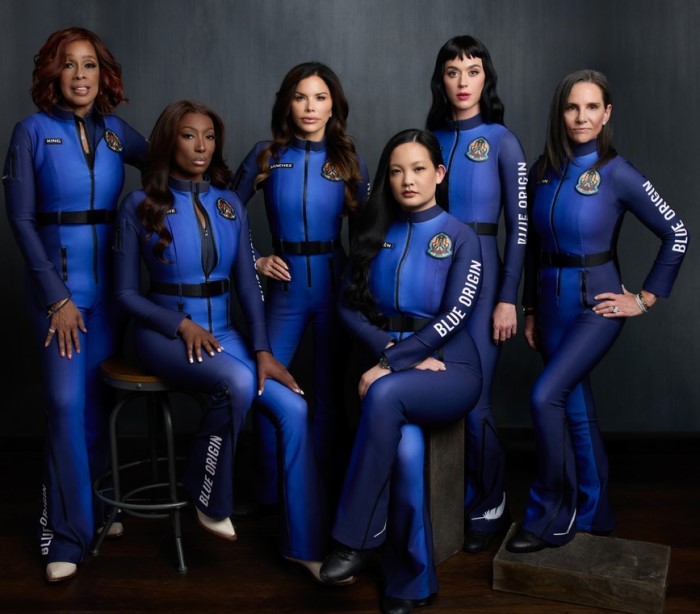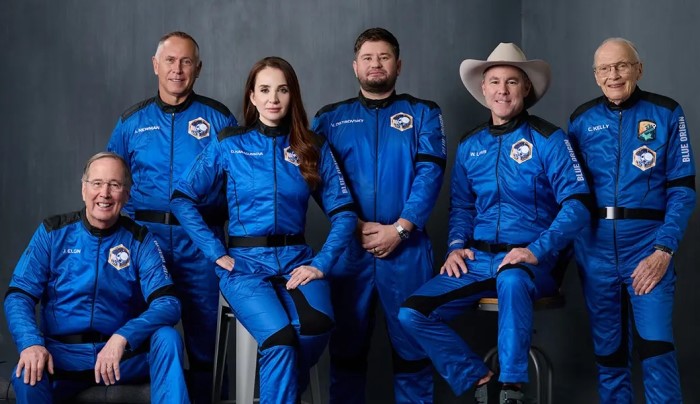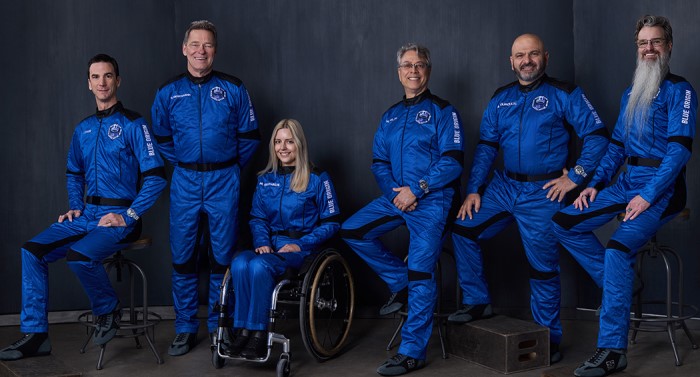Suborbital flights are flights along a ballistic trajectory, during which the astronauts are
in a state of weightlessness, and examine the contour of the planet Earth from space.
History of the suborbital manned space flights.
On May 5, 1961 Alan Shepard became the first person to make a suborbital flight into space.
And in doing so, he became the first American to fly into space. Shepard's mission started from Cape Canaveral.
Its capsule Freedom 7 Mercury rose to an altitude of 187.42 km, and
then splashed down in the Atlantic Ocean.
The second suborbital flight was made Virgil Grissom on July 21, 1961 in the capsule
Liberty Bell 7 Mercury . His Liberty Bell 7 Mercury capsule
rose to an altitude of 190.39 km, and then splashed down in the Atlantic Ocean.
After the flights of Shepard and Grissom, the Air Force X-15 hypersonic jet also began to perform suborbital flights.
On July 17, 1962, during the 62nd X-15 flight, pilot Robert M. White lifted a rocket-powered spaceplane to an altitude of 95.9 km,
crossed the border of space according to the US version at an altitude of 80 km.
In the period from 1962 to 1968, the X-15 aircraft made a total of 13 suborbital space flights, including two,
which reached the Karman Line (the 100 km boundary of space), officially recognized by most of the world.
These two flights were performed by Air Force pilot Joseph A. Walker and remain the highest flights achieved by the X-15.
Although the X-15 was operated by the US Air Force and NASA and was never intended for tourism, the program helped pave the way for
development of commercial suborbital rocket spacecraft such as Virgin Galactic's SpaceShipOne and SpaceShipTwo.
In May 1996, Xprize, later renamed the Ansari X Prize, pledged to award $10 million to the first non-governmental
organization that will launch a manned spacecraft into space and back twice in two weeks.
The purpose of the prize was to stimulate the development of low-cost space travel, which is necessary for the development of the commercial market.
The competition was attended by 26 teams from around the world who participated in the development of a spacecraft that meets the requirements.
The prize was won on October 4, 2004, when Scaled Composites completed its second manned suborbital flight in
two weeks on his SpaceShipOne spaceplane. The first flight to the prize took place five days earlier, on September 29.
This was SpaceShipOne's third launch, with its maiden flight on June 24, 2004. The flights reached altitudes of 100.1 km, 102.9 km and 112 km,
respectively.
Currently, the two companies Virgin Galactic and Blue Origin are facing off against the space tourism market.
2021 marks a turning point in which suborbital tourist flights begin. In July 2021, after many years
postponements, and after several test flights, the first space tourists set off on suborbital space flights.
Two rival companies Virgin Galactic and Blue Origin sent first passengers to suborbital space
flight on July 11 and 20, respectively.
Virgin Galactic has launched its first suborbital crewed flight into space after several previous test flights
suborbital flights with a crew. Unity 22's mission took place just days before Blue Origin
carried out its first manned suborbital flight on July 20.
Both companies have been developing suborbital spacecraft for over a decade with the ultimate goal of launching
to the fringes of space by tourists who pay for the flight, and to conduct scientific experiments during some of these flights.
Both billionaires themselves on their ships went on the first space flight.
— Competition —
Later that day, Virgin announced that Branson was planning to take off on July 11 along with five of its employees.
This launch was the first to involve non-professional “passengers” on board.
Bezos did not comment on Virgin's sudden decision to schedule Branson's flight earlier than Blue Origin's.
But on Friday, the company posted a tweet stating that New Shepard passengers would climb to the height.
Over 62 miles, the internationally recognized frontier of space is the Karman Line - but Virgin Galactic's customers are not.
The Virgin Galactic rocket plane takes off to an altitude of just over 50 miles — the boundary of space recognized by
the US Air Force, NASA and the Federal Aviation Administration.
From the beginning, the New Shepard was designed to fly above the Pocket line.
— Virgin Galactic —
Virgin Galactic was founded by British billionaire Richard Branson in 2004.
Global media tycoon Richard Branson (70, in 2021) previously crossed the Pacific Ocean in a hot air balloon and the
English Channel in an amphibious vehicle.
The company has set itself the goal of developing and operating commercial spacecraft to provide
paying customers suborbital space flights above the 80 km mark set by the United States.
Virgin Galactic's VSS Unity spacecraft is based on the concept of the legendary winged space plane
aircraft designer Bert Rutan.
A smaller version of the two-man SpaceShipOne spacecraft won the 2004 Ansari X-Prize in
the amount of $10 million, having made two suborbital flights to space and back in two weeks.
Branson acquired the design rights and increased the spaceplane's capacity from two pilots to six passengers.
Virgin's earlier spaceplane, VSS Enterprise, crashed during a test flight in 2014.
The National Transportation Safety Board concluded that the co-pilot unlocked the plumage too early,
and the ship was torn apart due to aerodynamic loads.
The co-pilot was killed, and the pilot, who was somehow torn from the disintegrating ship, was seriously injured.
Virgin Galactic added precautions to prevent premature reversal and the system has worked flawlessly since then.
The Virgin Galactic spacecraft is not a classic rocket, but a rocket plane. It attaches to the belly of a large
carrier aircraft taking off from the runway.
An hour later, upon reaching an altitude of about 15 km, the VSS Unity rocket plane separates from the carrier aircraft, launches
its engines and reaches suborbital space, where passengers float in zero gravity for several minutes,
and then glides back to Earth.
When the spacecraft descends, the wings and tail booms with empennage create tremendous resistance,
like a shuttlecock for badminton, reducing reentry speed and heating while helping to retrieve the ship
in the correct orientation without pilot intervention.
Returning to the atmosphere at an altitude of about 55,000 feet, the wings rotate downward parallel to the fuselage, the ship
becomes a glider, and pilots direct it to land on the 12,000-foot runway at Spaceport America.
The VSS Unity spacecraft can accommodate two pilots and up to six passengers. The salon has 12 large windows and 16 cameras.
The company currently operates a SpaceShipTwo rocket plane, named VSS Unity, and a WhiteKnightTwo carrier aircraft
named VMS Eve. SpaceShipThree's VSS Imagine was recently unveiled and is awaiting ground and flight tests.
VSS Unity is the second SpaceShipTwo to be developed by Virgin Galactic. The first, VSS Enterprise, died as a result
crash over the Mojave Desert in California on October 31, 2014.
After a successful climb and separation from the carrier aircraft, VSS Enterprise started the engine at an altitude of 15 km,
to start climbing. Just 11 seconds after turning on the engine, the co-pilot unlocked prematurely
the tail mechanism, which led to a sharp aerodynamic destruction of the Enterprise.
Pilot Peter Siebold ejected, still strapped to his seat, who managed to unbuckle despite
serious injuries, he landed safely with a parachute on the ground. Co-pilot Michael Alsbury died.
The U.S. National Transportation Safety Board (NTSB) ultimately determined that the accident was caused by
a combination of pilot error, inadequate pilot training, spacecraft design deficiencies that
did not provide protection against piloting errors in critical situations, at the wrong time in flight.
VSS Unity, named by physicist Stephen Hawking, was about 65% complete at the time the Enterprise was lost and into its design
changes were made to take into account the results of the investigation into the causes of the disaster.
VSS Unity can carry up to four passengers and two pilots. After takeoff from the America spaceport in New Mexico
the Unity ship on VMS Eve rises to an altitude of just under 15 km. Then Unity is freed from the carrier plane
and makes a short freefall before launching its only hybrid rocket engine.
The engine is powered by nitrous oxide and hydroxyl-terminated polybutadiene. Engine running
about one minute, creating a thrust of 310 kN with a specific impulse of 250 seconds, which allows Unity to achieve maximum
heights from 15 km to about 85 km. After turning off the engine, the crew and passengers are in zero gravity for about 4 minutes,
they are allowed to unfasten from their seats and swim in the cockpit.
At this time, the ship unfolds its wings to an upright position, preparing to enter the atmosphere. After entering the atmosphere
the wings fold back to their normal horizontal position and Unity plans to land on the same runway,from which
he launched at Spaceport America.
Along with Branson, company pilots Dave MacKay and Michael Masucci were aboard the VSS Unity spacecraft, as well as
Beth Moses, Chief Astronaut Instructor at Virgin Galactic, Colin Bennett Lead Operations Engineer
at Virgin Galactic and Sirisha Bundla, Vice President of Government Affairs and Research Operations at Virgin Galactic.
-
Beth Moses, Chief Astronaut Instructor at Virgin Galactic. Moses will serve as cabin lead and test director
in space, overseeing the safe and efficient execution of the test flight objectives.
-
Colin Bennett, Lead Operations Engineer at Virgin Galactic. Bennett will evaluate cabin equipment,
procedures, and experience during both the boost phase and in the weightless environment.
-
Sirisha Bandla, Vice President of Government Affairs and Research Operations at Virgin Galactic.
Bandla will be evaluating the human-tended research experience, using an experiment from the University
of Florida that requires several handheld fixation tubes that will be activated at various points in the flight profile.
-
Sir Richard Branson, founder of Virgin Galactic. Branson will evaluate the private astronaut experience and
will undergo the same training, preparation and flight as Virgin Galactic’s future astronauts. The Company
will use his observations from his flight training and spaceflight experience to enhance the journey for
all future astronaut customers.
- The pilots for this mission are Dave Mackay and Michael Masucci flying VSS Unity, and CJ Sturckow and Kelly Latimer flying VMS Eve.
This is the third suborbital test flight for MacKay, and the second flight for Masucci and Moses.
The July 11 flight was Virgin Galactic's fourth manned suborbital space flight and 22nd flight
VSS Unity in general, all flights were test flights. It is anticipated that prior to the commencement of commercial flights,
two more test flights.
The Virgin Galactic spacecraft and the Blue Origin rocket have their own advantages and disadvantages.
— Blue Origin —
Bezos' Blue Origin took a more traditional approach, developing a fully automated single-stage reusable
a rocket with a BE-3 hydrogen engine. The rocket, or power module, is designed to lift a capacious capsule of
a crew carrying up to six passengers to an altitude of over 62 miles.
Blue Origin, founded in 2000 by billionaire and Amazon founder Jeff Bezos, suggests
that millions of people will live and work in space, and has developed its New Shepard suborbital rocket as
the first step towards this goal. Bezos is 57 years old (in 2021) and is one of the richest people in the world. Scientific admirer
fiction, he stepped down as Amazon CEO in 2021 to focus on space projects.
New Shepard is a single-stage suborbital rocket consisting of a New Shepard accelerator and a capsule. It takes off
from a traditional launch pad and the launch vehicle lands while the capsule lands using
parachute and brake motors.
After the launch, the launch vehicle accelerates the capsule to a speed that allows it to move upward by inertia to an altitude of 105–110 km.
The launch vehicle is separated after the acceleration phase, with both the launch vehicle and the capsule moving along separate trajectories.
Up to six passengers are weightless for about 4 minutes.
Another important difference between the two vehicles is that New Shepard is fully automated,
whereas VSS Unity requires two pilots to manually operate it.
The New Shepard system underwent 15 uncrewed test flights and an emergency test before manned flight.
Of these 15 flights, two involved in-flight emergency shutdown tests, and numerous
flights also included scientific experiments.
The Blue Origin spacecraft is fully automated — there are no pilots or control systems on board — and it has
an emergency rescue system that is able to take the crew to a safe place at any time from the start of the highest point of flight.
The ship of the Blue Origin company is named New Shepard (after the name of the first American astronaut Alan Shepard,
which made a suborbital flight in 1961) is similar to a classic rocket, which accelerates to a speed of more than Mach 3.
The capsule contains an Aerojet Rocketdyne solid-propellant rocket engine designed for rapid repulsion
capsules from a faulty booster. The emergency interrupt system has been successfully tested three times in flight.
The capsule also features six of the largest windows ever built in a spaceship, each
measuring 28.8 inches (73.152 cm) wide and 42.7 inches (108.458 cm) high.
Blue Origin clients will experience approximately three times the force of gravity while ascending into suborbital space
Once the rocket reaches the proper altitude, the capsule with the astronauts separates from the launch vehicle and then conducts
four minutes at an altitude in excess of 60 miles (100 kilometres) during which those on board experience
weightlessness and can observe the curvature of the Earth.
The launch vehicle autonomously lands on the pad two miles from the launch site, and the capsule returns
to the surface on three large parachutes, which slow it down to about a mile per hour upon landing.
The capsule has six seats and six large windows.
The New Shepard flies slightly higher than the Pocket 62-mile line, while the Virgin Galactic space plane
initially at least 10 miles lower.
Although the Virgin Galactic spaceplane's hybrid engine is not equipped with an autonomous emergency shutdown system,
it can be disabled on command if the sensors detect any problem. And although the spaceplane has smaller windows,
there are more of them — 12 in the passenger cabin and five in the cockpit.
The biggest difference for passengers is the length of the flight. Blue Origin's New Shepard takes off into space
and lands in about 10 minutes. Virgin customers on VSS Unity spaceplane, first
will rise to an altitude of 15 km on a VMS Eve jet carrier, and then will be released for flight on a rocket
into space and a gliding descent to Earth. The duration of the flight from takeoff to landing is an hour or more.
On July 20, 2021, the New Shepard spacecraft made its first manned suborbital flight. The ship reached an altitude of 107, 48 km.
The crew of the first flight included the founder of the company Jeff Bezos, his brother Mark Bezos, Wally Funk and Oliver Daemen.
Mark Bezos (53) is a financier who runs the Bezos Family Foundation and is a volunteer firefighter.
Wally Funk is a member of the Mercury 13 female astronaut group. Mercury 13 is a group of women who have gone through many
from the same physiological and psychological training programs as the first NASA astronauts. The program never
was not official, and none of the women ever flew into space. However, she made a successful career
in aviation, becoming the first female aviation safety inspector on the National Safety Board at
transport and worked as a senior pilot in several flight schools.
Wally Funk, who was 82 in 2021, has a dream of flying into space. Wally Funk became the oldest man
who reached space, surpassing the record set by John Glenn in 1998, when at the age of 77
he made a weeklong orbital flight aboard the Discovery STS-95 shuttle.
The fourth passenger on New Shepard's first manned flight was 18-year-old Oliver Daemen. Bought a place for Oliver
his father is a hedge fund manager.
The winner of the $28 million auction, despite knowing the upcoming flight date at the time of the auction,
reported a "scheduling conflict" and postponed his flight to a later time. Oliver Daemen is licensed
a private pilot and is interested in astronautics. He plans to start studying physics at the university.
At 18, Oliver became the youngest person to reach space - a record currently held by
Soviet cosmonaut German Titov, who completed an orbital flight at the age of 25.
In terms of future flights, Blue Origin has yet to announce ticket prices, except of a seat that was
sold at auction for $28 million in support of Blue Origin's Club for the Future.
Virgin Galactic plans to being scheduled commercial flights in early 2022 and plans to operate up to 400 flights
a year from Spaceport America, its base in New Mexico.
About 600 tickets have already been sold, including for Hollywood celebrities, at prices ranging from $200,000 to $250,000.
Tickets are expected to be even more expensive when they go on sale.
Blue Origin has yet to announce ticket prices or a start date for commercial operations. But one seat for the flight on July 20th
was sold at auction — and the mysterious winner paid $28 million.
— Commercial plans —
Including NASA's first two Mercury missions, 13 X-15 test flights over 50 miles, two Soyuz missile launches
and three flights in 2004 of the predecessor of the Virgin rocket plane, Branson's flight (Jul, 11 2021) became the 24th suborbital flight since 1961
and Bezos's flight (Jul, 20 2021) on New Shepard was 25th. Among 30 flights — 14 flights over 100 km.
—2022—
In total, three manned suborbital flights were made in 2022. 18 suborbital astronauts have flown in 2022.
All flights were carried out on a New Shepard rocket. 18 astronauts took part in the flights, one of them (Evan Dick) made the second
suborbital flight. All suborbital flights in 2022 will be above 100 km.
A total of 55 suborbital astronauts have made suborbital flights. 8 of them also made orbital flights.
Of the 47 suborbital astronauts, 34 flew above 100 km and 13 flew above 50 miles but below 100 km.
—2023—
In September 2022, Blue Origin's New Shepard crashed. Since then, New Shepard no longer flies. It is not clear when it will resume flights.
Virgin Galactic's VSS Unity resumed flights in 2023. VSS Unity made six flights in 2023. Only 20 people made suborbital flights for the first time. All
suborbital flights in 2023 - above 50 miles, but below 100 km.
A total of 75 suborbital astronauts have made suborbital flights. 8 of them also made orbital flights. Of the 67 suborbital astronauts, 34 flew
above 100 km and 33 flew above 50 miles but below 100 km.
—2024—
In 2024, there were 5 suborbital flights. Virgin Galactic's VSS Unity rocket plane made two flights.
A total of 11 astronauts (including Nikola Pecili - twice) flew on VSS Unity above 50 miles but below 100 km.
Blue Origin's New Shepard spacecraft made 3 flights. A total of 18 astronauts flew on
New Shepard above 100 km, including Mark Heigl and Sharon Heigl making their second suborbital flight.
A total of 29 people made suborbital flights, 25 of them for the first time. All
By the end of 2024, a total of 100 astronauts had made suborbital flights. 9 of them also made orbital flights.
Of the 91 suborbital astronauts, 50 have flown above 100 km and 41 have flown above 50 miles but below 100 km.
Crewed suborbital space flights.
| No. | Spacecraft | All | Above 50 miles | Above 100 km |
| 1 | Mercury |
2 | | 2 |
| 2 | X-15 |
13 | 11 | 2 |
| 3 | Soyuz |
2 | 1 | 1 |
| 4 | SpaceShipOne |
3 | | 3 |
| 5 | VSSUnity |
12 | 12 | |
| 6 | New Shepard |
16 | | 16 |
| Total |
48 | 24 | 24 |
Suborbital astronauts.
| No. | Spacecraft | All | Above 50 miles | Above 100 km | 2 flights | 3 flights | 4 flights | 6 flights |
| 1 | Mercury |
2 | | 2 | | | | |
| 2 | X-15 |
8 | 8 | 1 | 1 | 2 | | |
| 3 | Soyuz |
4 | 2 | 2 | | | | |
| 4 | SpaceShipOne |
2 | | 2 | 1 | | | |
| 5 | VSSUnity |
37 | 37 | | | 3 | 1 | 3 |
| 6 | New Shepard |
86 | | 86 | 6 | | | |
| Total |
139 | 47 | 92 | 7 | 6 | 1 | 3 |




